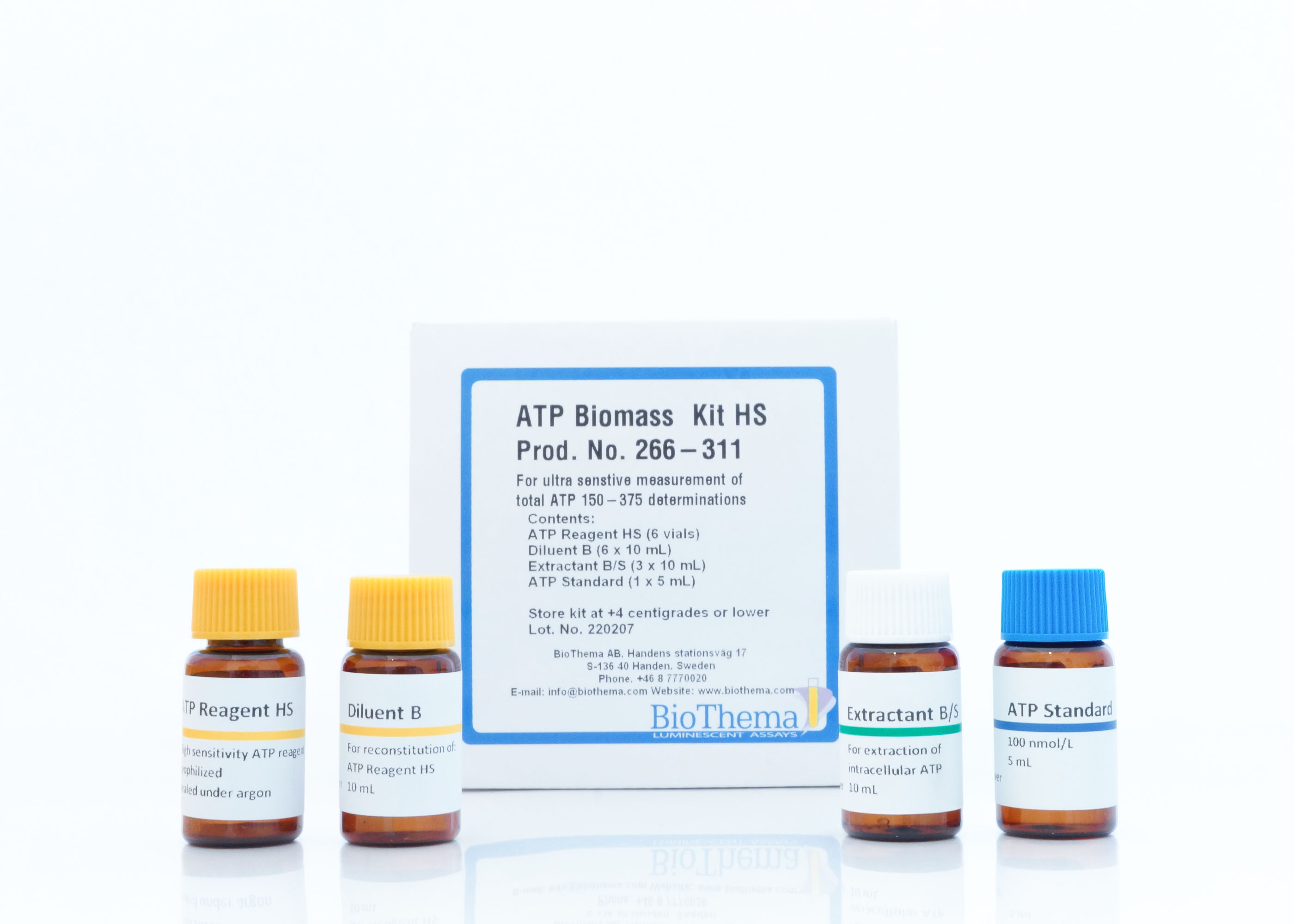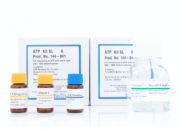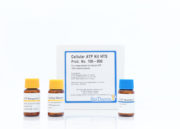Description
Applications
This kit is intended for determination of total ATP (adenosine triphosphate) in samples containing living cells. If the intention is to determine intracellular ATP one should consider using 266-111 Intracellular ATP Kit HS or 266-112 Microbial ATP Kit HS. These kits include an ATP Eliminating Reagent for degradation of extracellular ATP and the latter kit also a Cell Lysing Reagent for lysis of most animal cells. All living cells contain ATP where it plays the role of energy currency between different cellular processes. When cells die of natural causes, ATP is normally degraded. The intracellular concentration of ATP is carefully regulated to similar levels in all types of cells. ATP is therefore a good estimate of the total intracellular volume. Most bacterial cells contain approx. 2×10 -18 mol ATP per cell, while most eukaryotic cells, as a result of their larger size, contain 10 -15 mol ATP or more. ATP Biomass Kit HS, Intracellular ATP Kit HS and Microbial ATP Kit HS contain ATP Reagent HS (High Sensitivity) with a high luciferase activity. The luciferase activity in ATP Reagent HS is actually so high that if contaminated during reconstitution it will degrade the ATP background by one order of magnitude every 38 min. After mixing sample and ATP Reagent HS the light intensity decays by approx. 6% per min. This is slow enough to allow manual mixing and a tube luminometer without reagent dispenser can be used. The detection limit of the reagent is 10×10-18 mol ATP with a sensitive luminometer. This corresponds to 5 bacterial cells. We must here differentiate between bacterial cells and CFU, since one CFU may consist of several cells. If the detection limit is not adequate, it is possible to concentrate the sample by microfiltration, a procedure that will also remove most of the extracellular ATP.
Instruments
Any tube or microplate luminometer. It should be noted that tube luminometers are about one order of magnitude more sensitive. If a microplate luminometer is used it should have minimum two dispensers and should be able to mix the microplate.
Assay procedure
Detailed described procedures are found in the “Instructions for Use”, which is included with every kit.
Product characteristics
The kit contains reagents for 150-375 assays (each vial of ATP Reagent HS is sufficient for 25 assays in a tube luminometer and 62.5 assays in a microplate luminometer).
Detection limit:
The detection limit of the reagent is 10×10 -18 mol ATP with a sensitive luminometer. This corresponds to 5 bacterial cells.
References
1 Lundin, A. (2000) Use of firefly luciferase in ATP related assays of biomass, enzymes and metabolites. Methods Enzymol. 305, 346-370.





Reviews
There are no reviews yet.